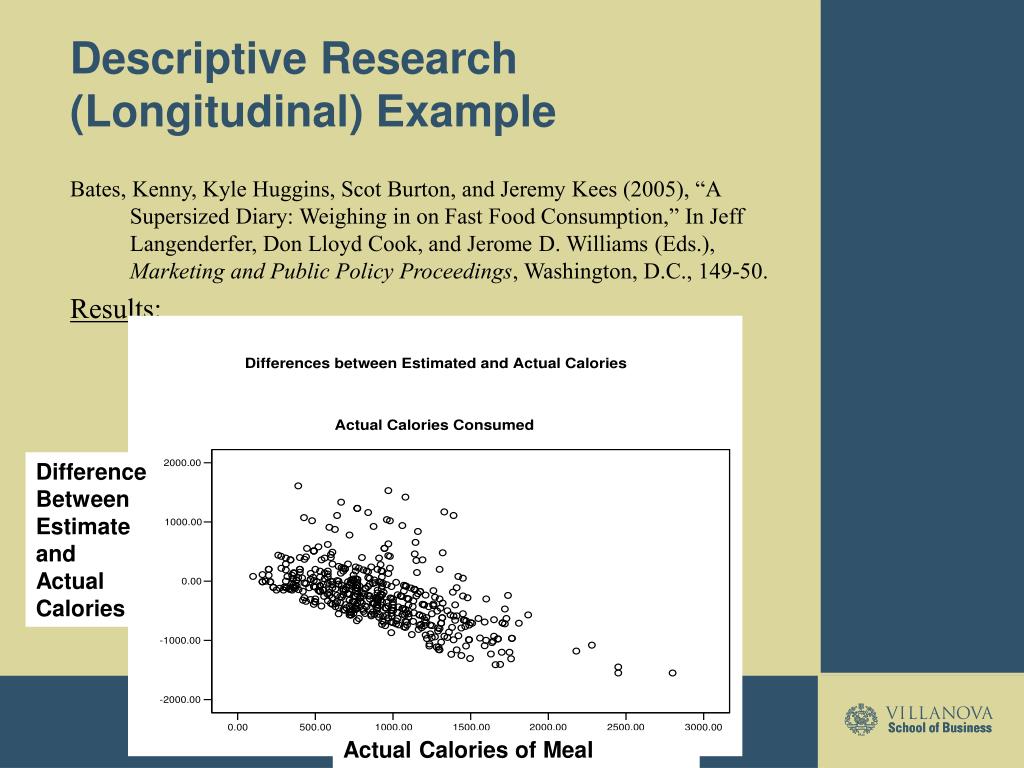Table Of Content

They're particularly useful when studying developmental and lifespan issues because they allow glimpses into changes and possible reasons for them. A major drawback of longitudinal studies is that because of their extended timespan, the results are likely to be influenced by epochal events. Even though the research was first published in 1956, the study went on for almost half a century after that. When thinking about what is a longitudinal study, we must also consider that these studies give results while they’re ongoing. Conclusively proving the link between smoking and cancer required a robust, longitudinal survey.
What Is a Longitudinal Study?

So, careful methodology is key throughout the design and analysis process when working with repeated-measures data. Accelerated longitudinal designs purposefully create missing data across age groups. A standardized study design is vital for efficiently measuring a population. Once a study design is created, researchers must maintain the same study procedures over time to uphold the validity of the observation.
Longitudinal study examples
The study concluded that the similarities and differences between twins are genetic in nature, rather than being the result of their environment (Bouchard et. al., 1990). While cross-sectional studies give you a snapshot of the situation in the research environment, longitudinal studies are better suited for contexts where you need to analyze a problem long-term. All rights are reserved, including those for text and data mining, AI training, and similar technologies. However, they can also include qualitative elements, such as interviews or observations, to provide a more in-depth understanding of the studied phenomena. On the other hand, cross-sectional studies tend to be cheaper and quicker but can only provide a snapshot of a point in time and thus cannot identify cause-and-effect relationships.
Retrospective Study
Google's Scientific Approach to Work-Life Balance (and Much More) - HBR.org Daily
Google's Scientific Approach to Work-Life Balance (and Much More).
Posted: Thu, 27 Mar 2014 07:00:00 GMT [source]
It is essential that the methods of data collection and recording are identical across the various study sites, as well as being standardised and consistent over time. Data must be classified according to the interval of measure, with all information pertaining to particular individuals also being linked by means of unique coding systems. Recording is facilitated, and accuracy increased, by adopting recognised classification systems for individual inputs (2).
Offline Survey
Medical researchers adopt retrospective study methods when they need to research rare conditions. The advantage of this extended observation is that the researcher can witness the sequence of events leading to the changes in the traits of both the target population and the different groups. It can identify the causal factors for these changes and their long-term impact. In case-control studies, researchers study one group of people who have developed a particular condition and compare them to a sample without the disease. However, researchers must carefully consider the assumptions behind the models they choose. Cohort effects can bias results if not accounted for, especially in accelerated longitudinal designs which assume cohort equivalence.
Contents
Longitudinal surveys have been used by researchers and businesses for a long time now, so there is no dearth of examples. Let’s walk through a few of them so you can better understand what is a longitudinal survey. Observing the same set of people can make sure that what you’re observing is a change over time. Visualizing the change over time will give you a clear idea of the trends and patterns, resulting in informed and effective decision-making. If you pick a different sample, variations in individual preferences could skew your results.
Costly and time-consuming
Prospective longitudinal studies eliminate the risk of recall bias, or the inability to correctly recall past events. Longitudinal studies also allow repeated observations of the same individual over time. This means any changes in the outcome variable cannot be attributed to differences between individuals.
In the days, months, years, or even decades that follow, they continually gather more information so they can observe how variables change over time relative to the baseline. One of the panel study’s essential features is that researchers collect data from the same sample at different points in time. Most panel studies are designed for quantitative analysis, though they may also be used to collect qualitative data and unit of analysis. Longitudinal studies often use surveys to collect data that is either qualitative or quantitative.
It is thus generally less valid for examining cause-and-effect relationships. Nonetheless, cross-sectional studies require less time to be set up, and may be considered for preliminary evaluations of association prior to embarking on cumbersome longitudinal-type studies. If you’re conducting a retrospective study, you’d have to collect data on events that have already happened. It’s an intelligent way to establish causal relationships within your sample population. If you choose to collect your own data, the way you go about it will be determined by the type of longitudinal study you choose to perform.
The downside to this method is that it’s very restrictive because you can only use the data set available to you. Retrospective studies are best for research contexts where you want to quickly estimate an exposure’s effect on an outcome. It also helps you to discover preliminary measures of association in your data. Longitudinal studies are time-consuming and often more expensive than other types of studies, so they require significant commitment and resources to be effective.
Multilevel models are useful for hierarchically structured longitudinal data, with lower-level observations (e.g., repeated measures) nested within higher-level units (e.g., individuals). Within-subjects designs, in which people are repeatedly measured, may be subdivided into non-longitudinal and longitudinal types. In the non-longitudinal variety, participants are repeatedly exposed to different treatments or tasks, but time is considered an irrelevant feature. In fact, the researcher counterbalances the different treatment sequences across participants in an effort to eliminate temporal... The simplest way to understand what is a longitudinal study is to think of it as a survey taken over time. The passing of time could influence the responses of the same person to the same question.
Longitudinal studies can provide a wealth of valuable information that would be difficult to gather any other way. Despite the typical expense and time involved, longitudinal studies from the past continue to influence and inspire researchers and students today. Especially in research areas that study developmental or life span issues, longitudinal studies become almost inevitable. From the examples above, it is clear that longitudinal studies are essential because they provide a unique perspective into certain issues which can not be acquired through any other method.
Social support and complicated grief: A longitudinal study on bereaved parents after the Utøya terror attack in Norway - Psykologisk.no
Social support and complicated grief: A longitudinal study on bereaved parents after the Utøya terror attack in Norway.
Posted: Wed, 19 Jul 2017 07:00:00 GMT [source]
As we’ve demonstrated, a longitudinal study is useful in science, medicine, and many other fields. There are many reasons why a researcher might want to conduct a longitudinal study. One of the essential reasons is, longitudinal studies give unique insights that many other types of research fail to provide. Following adequate design, the launch and implementation of longitudinal research projects may itself require a significant amount of time; particularly if being conducted at multiple remote sites.
He records information like how much they weigh, the number of carbs in their diet, and the like at different points. During cohort study, the researcher exposes some group members to a specific characteristic or risk factor. Then, she records the outcome of this exposure and its impact on the exposed variables.













